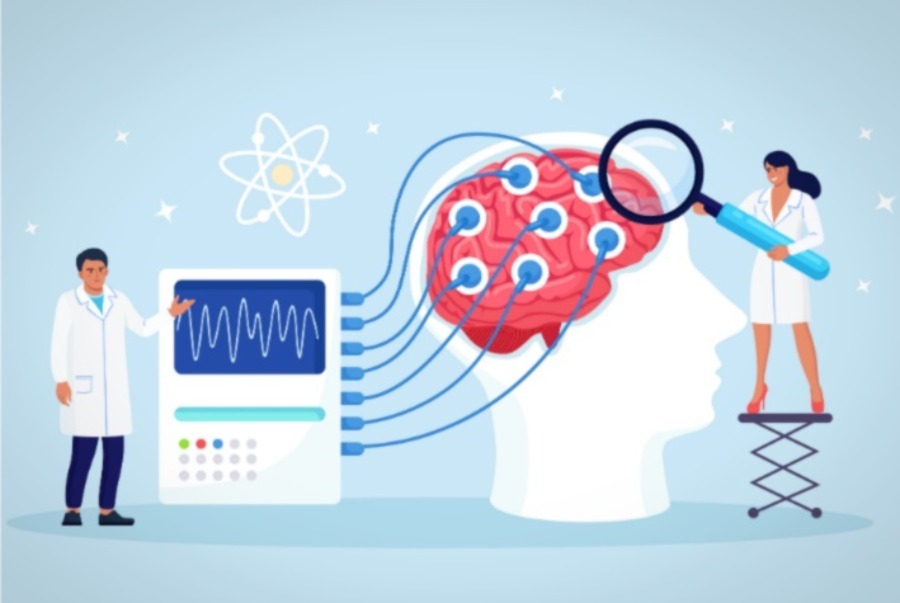Introduction
Epilepsy is a complex neurological disorder that affects millions of people worldwide. It is characterized by recurrent seizures, which are sudden and uncontrolled electrical disturbances in the brain. Seizure detection plays a crucial role in epilepsy management, allowing for timely intervention and personalized treatment plans. In recent years, significant progress has been made in leveraging signal processing and machine learning techniques to detect and predict seizures using electroencephalogram (EEG) data. This article provides an in-depth exploration of the importance of EEG signal processing in epilepsy detection and offers a comprehensive survey of various seizure detection methods, highlighting their strengths and limitations.
The Significance of EEG Signal Processing in Epilepsy Detection
EEG is a non-invasive technique that records electrical brain activity through electrodes placed on the scalp. While EEG data is invaluable for understanding brain function, the raw signals are often contaminated with noise and artifacts, making it challenging to identify seizure events accurately.
Preprocessing of EEG Data
The first step in EEG signal processing is preprocessing, which involves the application of filters and various algorithms to remove artifacts and noise from the raw EEG recordings. Common preprocessing techniques include band-pass filtering to eliminate unwanted frequencies, baseline correction to remove the DC offset, and artifact removal to mitigate interference from eye blinks, muscle movements, and other external factors. Proper preprocessing ensures that the subsequent analysis focuses on meaningful brain activity related to epilepsy.
Feature Extraction
Feature extraction is a critical step in seizure detection, where informative features are derived from the preprocessed EEG data. Various domains are commonly used for this purpose, including time-domain, frequency-domain, and time-frequency domain features. Time-domain features encompass statistical measures such as mean, variance, and skewness. Frequency-domain features involve spectral analysis techniques like the Fast Fourier Transform (FFT) to analyze the frequency components of the EEG signal.
Machine Learning Algorithms for Seizure Detection
Following feature extraction, machine learning algorithms are employed to classify EEG segments into seizure and non-seizure states. Supervised learning techniques like Support Vector Machines (SVM), Artificial Neural Networks (ANN), Random Forests, and K-Nearest Neighbors (KNN) are commonly used for this purpose. These algorithms learn patterns from the extracted features and can distinguish between normal brain activity and epileptic seizures. Unsupervised learning approaches, such as clustering and anomaly detection, have also been explored for seizure detection in scenarios where labeled data is limited.
Deep Learning in Seizure Detection
In recent years, deep learning techniques have emerged as powerful tools for EEG-based seizure detection. Convolutional Neural Networks (CNNs) are particularly effective in automatically learning relevant spatial patterns from EEG scalp data. Recurrent Neural Networks (RNNs) excel in capturing temporal dependencies in EEG time series, which is crucial for detecting seizure patterns. Hybrid models that combine CNNs and RNNs have shown promising results in accurately identifying seizures, often outperforming traditional machine learning approaches.
Challenges and Future Directions
Despite significant progress, several challenges persist in EEG-based seizure detection. One major obstacle is the lack of a standardized dataset for benchmarking different algorithms, making it difficult to compare performance across studies. Additionally, the high dimensionality of EEG data can lead to increased computation and memory requirements, hindering real-time seizure detection in clinical settings. Researchers are actively working to address these challenges and enhance the accuracy, robustness, and efficiency of seizure detection systems.
Challenges
- Data Variability: EEG signals can vary significantly among individuals and even within the same person over time. The lack of standardized protocols for data acquisition and varying recording conditions can introduce inconsistencies, making it challenging to develop generalized seizure detection models.
- Imbalanced Data: Seizure events are relatively rare compared to non-seizure periods in long-term EEG recordings. Imbalanced datasets can lead to biased models that perform well in detecting non-seizure segments but struggle with accurately identifying seizure events.
- Artifact and Noise Interference: Despite preprocessing efforts, EEG recordings may still contain artifacts and noise that can influence feature extraction and classification.
- Overfitting and Generalization: Developing robust and generalizable seizure detection models is a challenge, especially when dealing with limited and unrepresentative datasets.
- Real-Time Processing: Real-time seizure detection is critical for providing timely alerts and intervention.
Future Directions
- Large-Scale Collaborative Datasets: Establishing standardized and diverse datasets with input from multiple research institutions and clinics would enable better benchmarking of seizure detection algorithms. Large-scale collaborative efforts can foster the development of more robust and generalizable models.
- Advanced Signal Processing Techniques: Researchers are exploring advanced signal processing methods, such as deep learning-based feature extraction, to automatically learn relevant representations directly from raw EEG data. These techniques may offer better generalization and reduce the reliance on hand-crafted features.
- Transfer Learning: Leveraging pre-trained models from related domains (e.g., natural language processing or image recognition) and fine-tuning them on EEG data may help overcome the limited data problem and improve the performance of seizure detection algorithms.
- Online Learning and Adaptation: Implementing adaptive algorithms that can continuously learn from new data and adjust their parameters in real-time can enhance the adaptability and responsiveness of seizure detection systems to individual patients’ changing brain dynamics.
- Multimodal Integration: Integrating EEG data with other physiological and clinical information, such as electrocardiogram (ECG), electrooculogram (EOG), and patient behavior, could enhance the specificity and reliability of seizure detection systems.
Conclusion
EEG signal processing, coupled with advanced machine learning and deep learning techniques, has the potential to revolutionize epilepsy detection and management. By extracting relevant features and using sophisticated algorithms, EEG-based seizure detection can provide early warning systems, personalized treatment strategies, and an improved quality of life for individuals living with epilepsy. As research progresses, collaboration between clinicians, neurologists, and signal processing experts becomes paramount to advance the field further and make a meaningful impact on epilepsy care. The continued advancements in EEG signal processing will undoubtedly contribute to better outcomes for epilepsy patients in the future.
Image Source: https://corticare.com/wp-content/uploads/2022/02/Feb-2-22-Blog-Pic.png

